Sound the Alarm: Data Sonification as a Tool for Climate Action
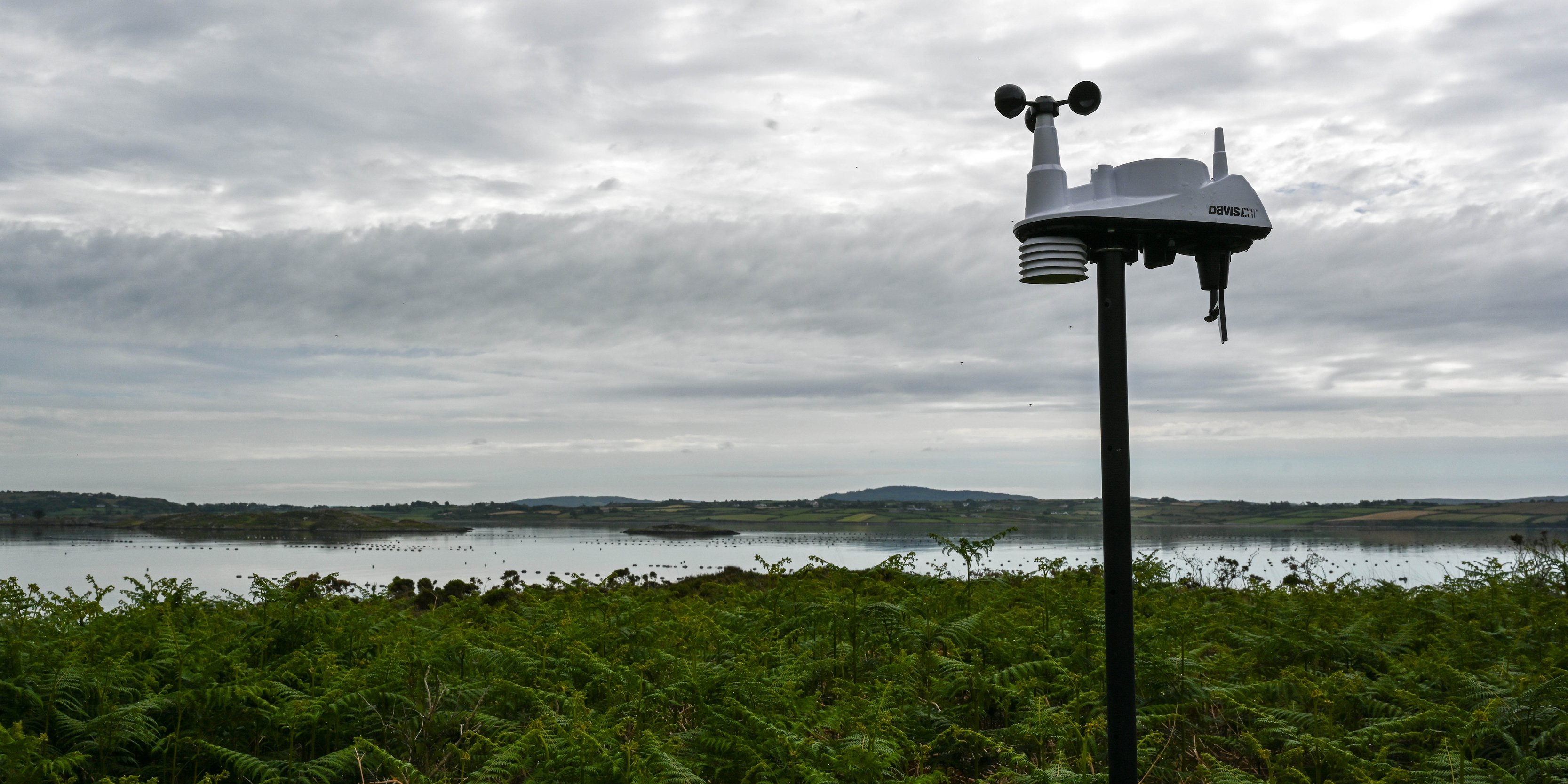
Using sound as a warning is nothing new: fire alarms, school bells and car horns all notify us to pay attention to our immediate surroundings. Some give us small insights, like the bleep of a scanned barcode or the ping of a smartphone – but there are more serious matters that demand our attention too. We’re living in the Anthropocene era, a time when human activity is severely impacting our climate and ecosystems. Deforestation, ocean acidification and a decline in biodiversity are problems that threaten the world as we know it, yet the Earth has no easy means to alert us – no bells, no beeps, no sirens. But what if our planet could sound the alarm to warn us about the issues that have been silently surfacing for generations? If you could speak on behalf of the Earth, what would you want to say?
We often rely on visual data such as graphs, heat maps and pie charts to better understand the world around us. But what if we could listen to that data instead? Since the early 20th century, humans have been using sound to reveal imperceptible phenomena. The invention of the Geiger Counter in 1908 enabled us to detect and analyze radiation by converting it into audible clicks. It wasn’t until 1992 that data sonification was properly defined, but since then, the practice of using nonspeech audio to communicate information has gained traction among scientists, sound artists and music makers alike.
Data sonification has also emerged as a promising tool for raising climate change awareness. From the sounds of our declining forests to the changing weather patterns of our planet, it offers us a powerful new way to amplify, understand and connect with the stories that the Earth has to tell.
“Our auditory senses have always played an important role,” says Marcus Maeder, an environmental scientist, sound artist and practitioner in the field of data sonification. “We have the capability to analyze what we hear very quickly. This had evolutionary benefits because we could quickly identify sound sources and their position. It enabled us to survive ‘the tiger waiting in front of our cave’. But sound also seems to connect more directly to our emotions. Maybe because of music’s history as an emotional form of communication. It begins with your mother singing for you and perhaps ends with a pop song touching you when you hear it on the radio.”
Marcus Maeder’s passion for environmental science and data sonification started to blossom when he was studying fine arts in Switzerland. Already inspired by the rise of electronic music and techno in the ‘90s, he started to explore field recording and sound art, soon noticing its potential connection with environmental science.
“Once you are a sound artist you find yourself outdoors with a microphone,” he explains. “And so I started to realize what I was hearing in my environment had an ecological meaning. Suddenly, this began to interest me, and that was maybe the moment where it all started.”
treelab
Throughout his career, Maeder’s work has touched on a broad spectrum of ecological concerns. He has collaborated with a diverse group of scientists, researchers, and environmental organizations on various eco-acoustic investigations that look at regions, communities and organisms under the influence of climate change. He mentions his spatial sound installation treelab, which he co-created with Roman Zweifel, as one of his most significant environmentally-related sonification projects to date.
“We worked together to take measurements in Valais,” Maeder recalls. “We knew the trees there produced a lot of sound because it’s one of the driest areas of the Swiss Alps — and trees produce the loudest sounds when they are under drought stress.”
He notes that the forest in this region is predominantly made up of Scots Pine trees. “This particular species is already at its physiological limit regarding drought and heat periods,” he explains. “So parts of the forest are already dying.”

Scots Pine in Valais with sensors and cameras, 2015 (Photo: Marco Zanoni)
As they worked on treelab, Maeder and Zweifel realized that they could use the acoustic emissions of trees to illustrate the effects of climate change. In an effort to make the region’s environmental issues more relatable to people who don’t see, feel or hear it in their everyday lives, they developed sound installations that rendered local drought stress measurements into an audible experience.
“The artistic task was to develop artificial sounds that illustrated the microclimatic conditions. So we had to find a sound for the air humidity, or for the sunlight falling on the plants, for instance. All these sounds together became like a generative music piece. Everything in the installation and the composition is made with Max/MSP and some JavaScript.”
A chance encounter with former French President François Hollande elevated treelab onto the global stage. Impressed by the work, Hollande proposed that the installation be shown at the United Nations Climate Conference in Paris (COP21). It was at this conference that 196 parties agreed to keep the increase in the global average temperature to “well below 2°C” compared to pre-industrial levels — a treaty now known as The Paris Agreement.
“This version of the project had the name trees: Pinus sylvestris but it was actually treelab,” Maeder remembers. “But, one thing is important to mention here. It sounds great to be at the climate change conference organized by the UN, and it was a fantastic experience. But actually, that was the wrong audience for us, because everyone there was already sensitive to climate change. However, I think the effect of our work is much bigger when we show it in public somewhere, where it isn’t expected at all.”
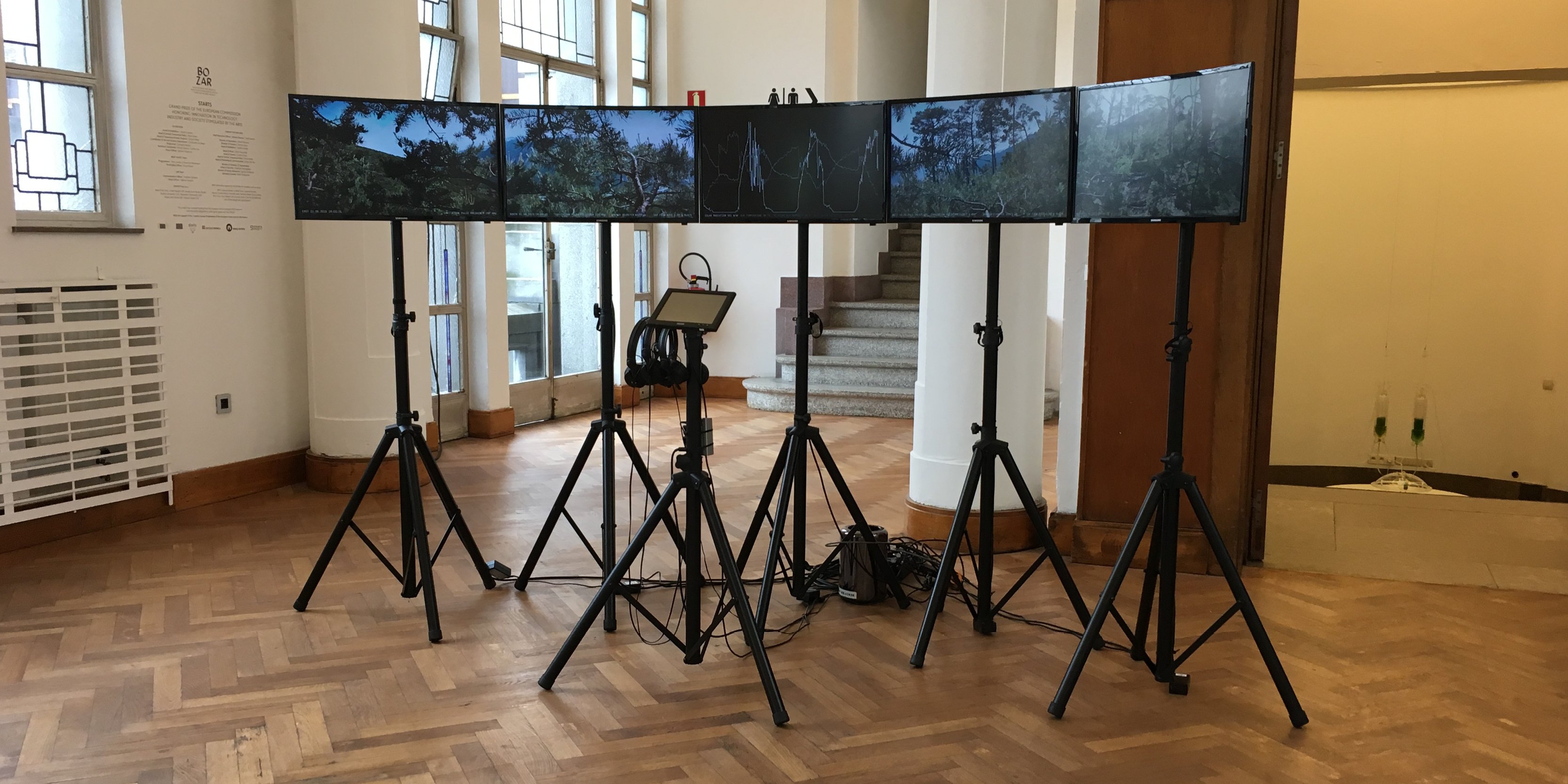
treelab monitor version, STARTS Prize exhibition, BOZAR Brussels, 2017 (Photo: Marcus Maeder)
Maeder emphasizes the crucial role that art has played in shaping important narratives throughout history. Drawing on examples from the Renaissance, he highlights that art has changed worldviews and has always been a carrier of new forms of knowledge. He believes that art’s role in shaping views on climate change is often underestimated. However, he acknowledges that his own work, like that of other artists, is just a tiny contribution to a much larger conversation.
“I think there’s a big potential for arts, or non-verbal forms of knowledge or narrative generation. It’s important that we start to understand that we are just part of something bigger. Music and art can help to express that in emotional ways.”
Loud Numbers
Loud Numbers is a data sonification studio founded by Miriam Quick and Duncan Geere. Together they host a podcast that tells data stories and uses them to create original musical compositions. “It’s fun to work at the intersection of storytelling, code, graphic design and data,” explains Geere, an information designer who helps environmental non-profits and other clients to tell stories with data.
“I’m really interested in novel, unique and multisensory ways of telling numbers,” adds Quick, whose work as a journalist and musician complements Geere’s skillset and the stories they tell together. “I think it’s possible to get jaded if you always look at things in the same way, and that novelty in sonification can be part of its strength. It’s a lot more emotional as well. Because music is inherently emotional, and you can draw on those resonances.”
Geere explains that while charts are a common way to communicate data, they can often feel distant and lack emotional impact. He believes that data sonification has a unique ability to evoke physical sensations. Unlike visuals, for example, sound can be experienced at a much higher volume and intensity, creating a more visceral and emotional response.
“One thing I always say is that sonification can get so loud that it physically hurts,” he says. “You can never get a bar chart that’s so long that it physically hurts you, you know? There’s a difference there in the way that you experience sound and how you experience visuals.“
Geere’s idea is perhaps best demonstrated in Loud Numbers’ data sonification of temperatures at three locations in the UK during the July 2022 heatwave. The numbers in the dataset ranged from a low of 11 degrees to a new record high for the UK of 40 degrees. The louder and rougher sounds in the piece reflect the hotter temperatures during the time period.
In their first Loud Numbers podcast episode ‘The Natural Lottery,’ Geere and Quick explore climate change in Alaska through a 100-year dataset collected by locals who participate in a sweepstake. The sweepstake involves putting bets on when a tripod placed on a frozen river will float away, pulling on a bell or siren as the ice melts in the spring. With bets totaling $100,000, this tradition has been going since 1917, making for a fascinating and unexpected dataset.
“They started very early in the 20th century,” says Geere. “So it's a really long dataset. And you can hear climate change in that because, over time, the ice breaks up earlier and earlier in the year.”
“The rise in time reflects rising global temperatures,” explains Quick. “And this is obviously accelerating with climate change.”
Quick recalls asking “How are we going to represent this in sound? How are we going to make this most audible and how are we going to make it meaningful to people?” The outcome was a Nordic techno track, derived from the dataset, which reflected the icy, frozen landscape of Alaska.
“A lot of it is really about trying to create an atmosphere,” explains Quick. “We think in sort of expressive terms. We think about the music first as well as the story and what visual images the topics conjure up in our minds.”
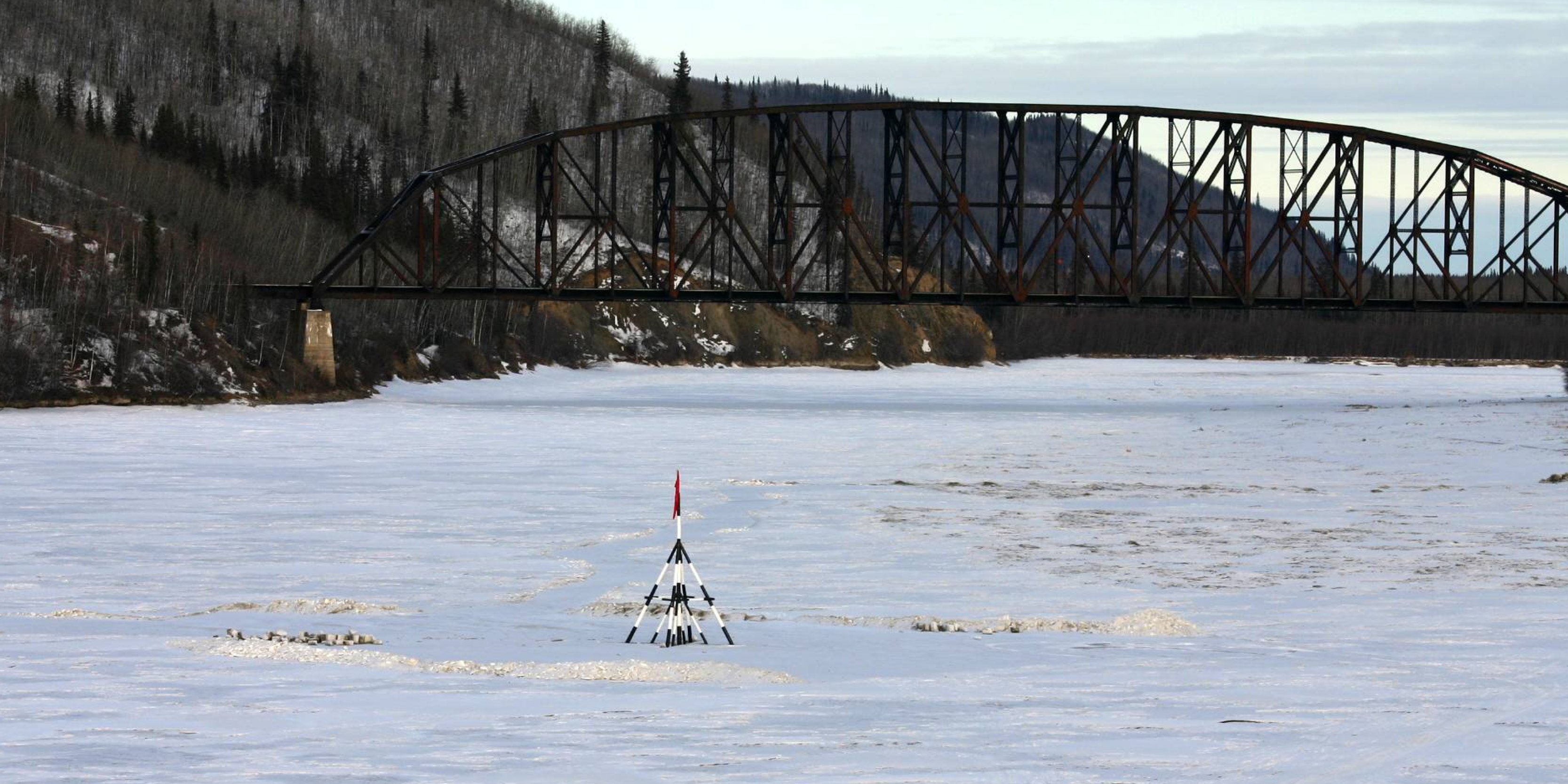
Tanana River in Nenana, Alaska. Creative commons, CC BY 2point0, credit Frank K
In an episode titled “The End of the Road,” Quick and Geere tell the story of another ecological threat – insect decline. They sourced a dataset from a scientific paper written by Anders Pape Møller, which documents over a 22-year period the decline in the number of insects found on his windscreen after driving on the same stretch of road.
“We’re representing the number of insects, according to the scientific paper,” Quick recalls. “The more insects there are, the more buzzing sounds there are, and as the insects disappear, the sounds fade away and the track empties out, and then it’s really quite silent at the end.”
“We presented it as a requiem for the last insect life, essentially,” Geere adds. “So we dropped in lots of sonic references to that. There are these very funereal-like bells in there. It communicates this very dark, funeral atmosphere. Using these little harmonic tricks and genre references to create atmospheres is very powerful. I think that is probably how our work differs from some other sonification artists.”
Data Sonification Tools and Techniques
Geere describes sonic variables, or parameters, as the different elements of sound that can be manipulated to represent data. These variables include pitch, loudness, tempo, duration, stereo position, instrument choice, harmony, and effects like delay, distortion, or reverb. The term “sonic variables” was inspired by the work of French cartographer Jacques Bertin, who developed a set of visual variables for data visualizations.
“Those variables are what you control with the data,” Geere explains. “So a larger number could be a louder number, for example. Or a more important data point could have a ton of reverb on it. Or, an unusual data point could be distorted in some way.”
“Time series data is often the most sensible to start with,” he says. “Because music naturally plays out over time, making it easier for the brain to process. It's very easy for the brain to think, OK, this is just a compressed version of a year in three minutes or something like that.”
While there are many tools that can be used for data sonification, Geere points beginners to simple web apps like TwoTone, which allow users to sonify datasets without the need to write code. For more complex sonification projects, programming-oriented tools like Sonic Pi, Super Collider, and Max/MSP are commonly used. Geere also uses VCV Rack, a free modular synthesizer software emulation, and learned enough C++ to code up a virtual module that can give users control voltages powered by data.
“If you drop in the virtual module it will give you control voltage outputs, which you can send to whatever combination of other modules you want; essentially, building your own instrument that is powered by data. These tools are a work in progress, with upgrades planned, but are a useful starting point for musicians who want to try out sonification in a hardware or software environment they are familiar with.”
Quick suggests not to overcomplicate things with too much data. When they were creating the musical component of “The Natural Lottery,” for example, she and Geere realized that working with too much information made it difficult for listeners to understand. Originally, they had experimented with mapping the earliness of ice breaking up to tempo, but found it got too complicated and hard to follow.
She also recommends testing different sounds at the extremes of their ranges to ensure that they can represent a full range of data effectively.
“Let’s say you’ve got a dataset that goes from one to nine, you’ll want to test what it sounds like at one, and what it sounds like at nine, because if it works at the extremes, then it’s going to work in the middle.”
For Marcus Maeder, it’s very important that sound artists understand the context of the data they work with. “Because good art, in my opinion, is always scientifically informed art,” he says. He encourages the students he teaches to read about the scientific disciplines or environmental contexts behind the data they collect, in order to create well-informed and meaningful work.
In his course ‘Sound and Environment’ at the Zurich Institute of Arts, he explains how his students collect data, do basic analysis and sonify the data using open-source or affordable computer tools. Maeder provides an online sonification tool for students who do not have knowledge of programming, and advanced students who know Max/MSP receive a sonification patch from him.
Environmental Acoustic Monitoring
A study by the Potsdam Institute has found evidence that the Gulf Stream, especially the northward-flowing part, has become unstable, suggesting dramatic effects on Europe’s future climate. At the invitation of the Crespo Foundation, Maeder’s acoustic monitoring project Imeall an chosta aims to scientifically and artistically investigate and observe the climatic changes on the coast of West Cork, Ireland, as a result of this instability. He explains that by recording the voices of animals and listening to the number of different sounds on land and underwater, researchers can get a sense of the area's biodiversity.
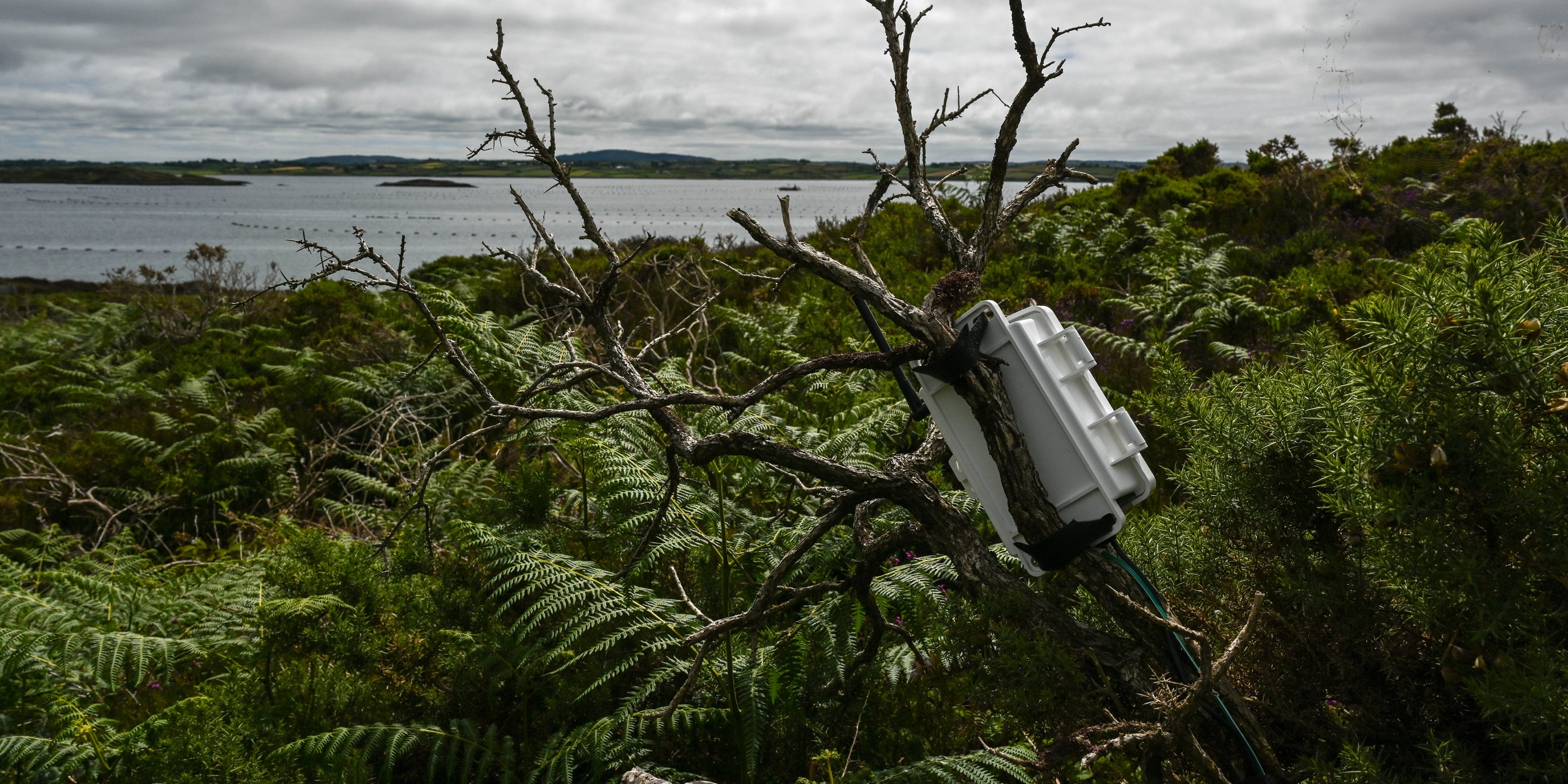
Microclimatic sensors at The bay of Ballydehob, Ireland (Photo: Marcus Maeder)
“You can determine the health of the seaweed forests just by the recordings,” Maeder explains. Because it’s so full of life. You hear the fish, you hear the mussels and you hear other organisms that are there. People do not really know how much sound these underwater living forms produce. Especially the seaweed themselves. They produce crazy sounds, almost like wavetable synthesis. Because they emit gas bubbles, which sound very synthetic actually. So it’s also an interesting way to get music samples out of that material.”
While Maeder continues to express interest in working on new projects, he also feels that it may be too late to simply warn people about climate change, as the effects are already visible and tangible. Instead, he now considers how his work can help people cope and manage with the effects that are already present.
“Somehow I get the feeling that I am radically too late. The catastrophe is already here. There’s this wonderful book called ‘Arts of Living on a Damaged Planet’. My work is going more and more in that direction I guess.”
Maeder believes that managing environmental issues involves developing new perspectives and ideas. He points to his work with Grün Berlin, where he is conducting a long-term observation of the abandoned East German amusement park, Spreepark. Over the past two decades, the area has been reclaimed by nature and transformed into a new wild space.
“We really have to transform the city centers and look at the way we live with other organisms, plants, and animals. I’m thinking about this a lot, in Berlin in particular. What could the future city structure be like? And, what could the acoustic implications of that be?”
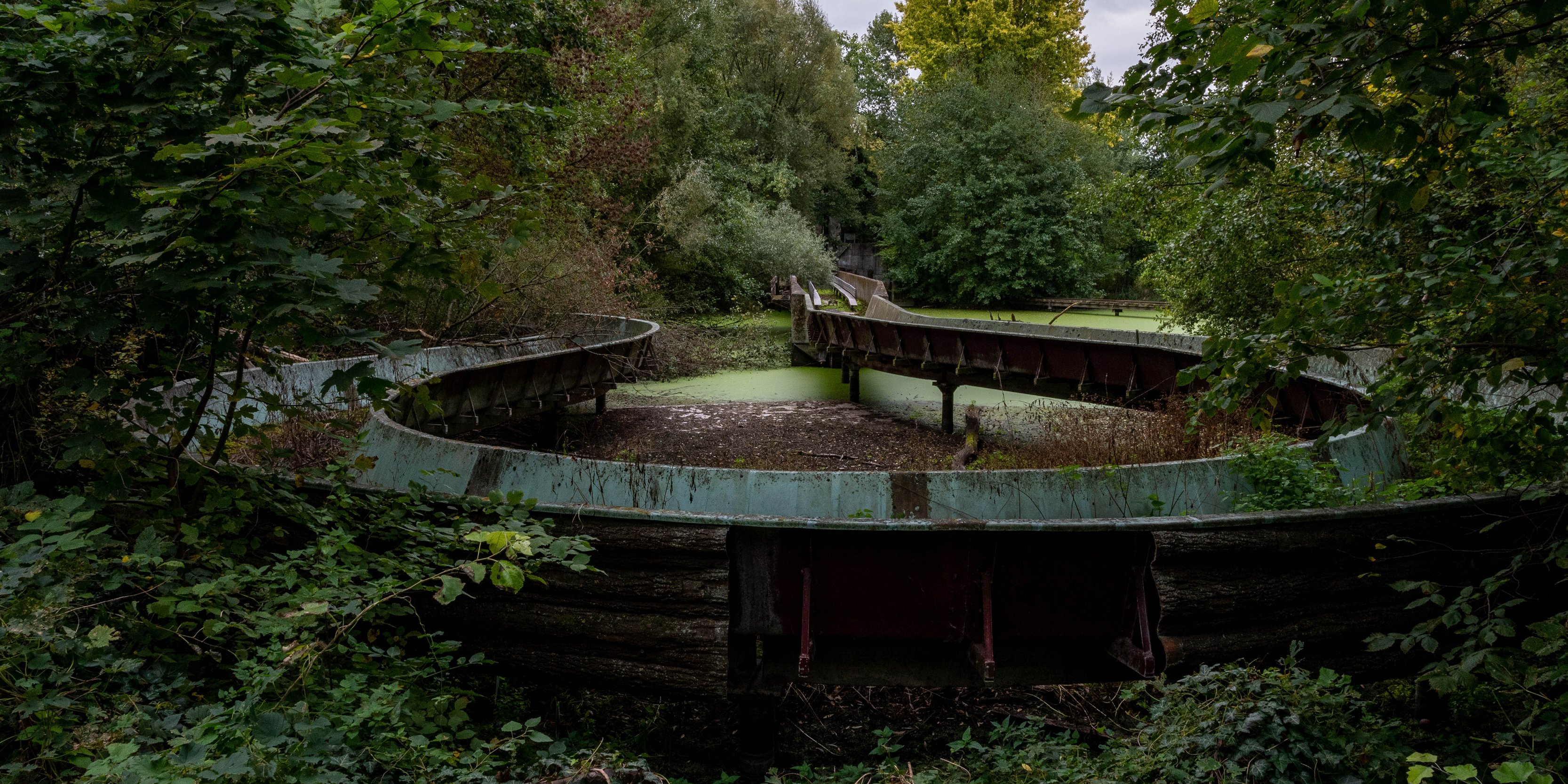
Flora and fauna have proliferated around the abandoned structures and grounds of Spreepark (Photo: Marcus Maeder)
Spreeparkradio, commissioned by Spreepark Art Space/Grün Berlin, offers a space-time journey through its soundscape from various locations on the site.
Getting Involved with Data Sonification
If you are feeling inspired to develop your skills and meet other data sonifiers, Quick and Geere have now launched Decibels, a new Discord community aimed at bringing together people interested in this field of work.
“We’ve started hosting a few community initiatives,” says Geere. “So every month we have a meet up which is just like a show and tell format, where people can bring something that they’ve made, or something that someone else has made that they want to talk about. We also run a challenge every month, where someone supplies a dataset, and people can make a sonification based on that.”
At the Loud Numbers Studio, Geere and Quick are also curating a repository of datasets for those interested in trying their hand at data sonification. Currently, the repository includes 64 years of annual data charting atmospheric CO2, surface temperatures, sunspots, oil spills, and ozone-depleting gasses. Also included is monthly data on atmospheric CO2, temperature anomalies, and arctic sea ice.
You can find these datasets, along with more tips and ideas on how to get started with data sonification, on the Loop Community Discord. Join the server.
Keep up with Marcus Maeder and Loud Numbers
Text and interviews by Jenna Jones and Joseph Joyce